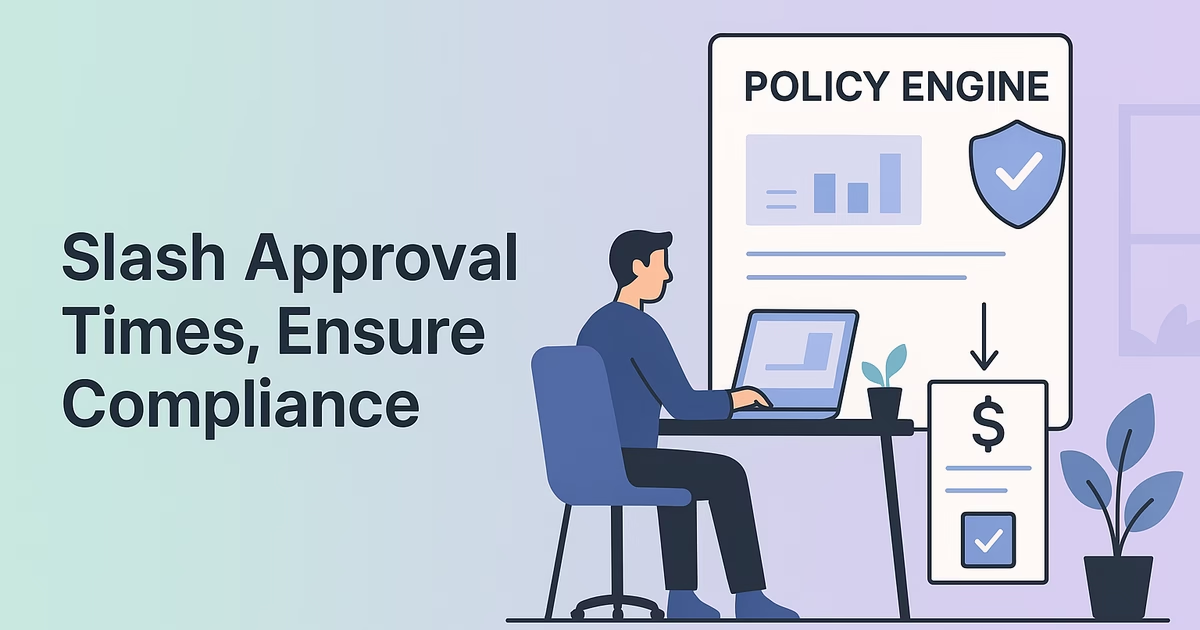Most finance teams believe they have procurement policy compliance under control because every policy is neatly documented. The disconnect? Policies on paper do nothing to stop a rogue purchase order moving through email at 10 p.m. on a Friday. While manual spot checks may catch a few errors, silent violations still inflate budgets and expand audit scope. Imagine a workflow where non-compliant requests are blocked the moment they appear, saving hours of triage and days of corrective re-work. In the next few minutes, you’ll see why static controls are failing, how an AI-driven framework closes the gap, and what to measure first to reclaim control.
The Hidden Saboteur Static Policies in a Dynamic Spend Landscape
Even the most sophisticated controllers rely on a tangle of PDF policies, shared drives, and ad-hoc approvals. Three root causes undermine enforcement:
- Latency of manual reviews – Human approvals happen long after a requisition is created, so bad data enters downstream systems before anyone notices.
- Policy fragmentation – Travel, IT, and marketing all keep separate rules, making it impossible for requesters to know which version applies.
- Audit blind spots – When violations surface during quarter-end close, the financial statements and your reputation are already exposed.
The result is a vicious cycle: more exceptions lead to more manual checks, which generate even more latency. Breaking this loop requires controls that are both immediate and adaptive.
The Dynamic Compliance Loop: A Four-Layer Model
To replace static policing with proactive control, high-performing teams adopt a closed-loop model that operates inside the requisition workflow itself.
1. Request Capture
Every request is born digital via a sourcing portal, mobile app, or ERP punch-out, so metadata (category, supplier, budget code) is complete from the second one.
2. Policy Mapping
AI tags each request to the relevant spend policy controls. Unlike hard-coded rules, an algorithmic engine can layer multiple policies corporate, project, and regional without confusing end users.
3. Intelligent Validation
This is the heart of automated rule enforcement. The engine cross-checks amounts, suppliers, and GL codes against thresholds and regulatory guardrails. Non-compliant fields trigger real-time error messages that guide the requester to the correct fix or block the request entirely.
4. Instant Consequence
When validation fails, the system applies pre-defined actions: auto-reject, force escalation, or quarantine for audit. Crucially, corrective steps happen before any financial commitment is made.
Simplify Procurement. Accelerate Growth.
Procbay’s AI streamlines requests, approvals, and vendors, so you save time and scale faster.
Together, these layers shorten the path from intent to compliance and build an auditable trail without extra effort from your team.
Designing Automated Rule Enforcement Without Choking Agility
Controllers fear that more rules will slow purchasing, yet agility and control are not mutually exclusive. Use these design principles:
- Configurable tolerance bands – Rather than a rigid dollar cap, set percentage ranges that flex with commodity volatility.
- Contextual exceptions – Flag supplier exclusivity clauses for critical components while allowing spot buys for low-risk office supplies.
- Self-service analytics – Provide requesters with a dashboard showing why a rule tripped, so they can resolve issues without finance intervention.
Procbay embeds these principles through its “kill-switch” validator, allowing you to adjust limits or add new rules in minutes, no code, no IT ticket.
Controller’s Playbook Requisition Validation Metrics that Matter
Many dashboards drown you in data. Focus on four metrics that reveal true control of health:
- First-pass compliance rate – Percentage of requests that clear validation with no edits.
- Exception turnaround time – Hours between block and resolution; shows whether rules are actionable.
- Policy deviation cost – Dollar value of requests that required manual override; signals gaps in rule logic.
- Validation coverage ratio – Share of total spend governed by active rules; highlights areas still at risk.
Track these weekly during rollout, then monthly as the process stabilises. Share trends with business unit leads to drive ownership.
From Guardrails to Gains: Turning Compliance Data into Spend Intelligence
Once AI blocks non-compliant requests, every exception becomes structured insight. Patterns in supplier overrides expose outdated contracts. Frequent threshold breaches spotlight budget misalignment. By feeding this data into predictive models, controllers can forecast cash needs and negotiate smarter terms.
Organisations using Procbay surface these trends automatically, piping exception analytics into their BI stack to inform category strategies and supplier scorecards. Even if you start on another platform, adopting the Dynamic Compliance Loop primes your data for advanced analysis later.
FAQ Common Objections
Q: Won’t constant blocks frustrate end users?
A: Real-time guidance shows the exact fix, so requests are corrected, not abandoned. Early adopters report higher user satisfaction once manual rework disappears.
Q: Our policies change quarterly. How hard is maintenance?
A: Rule libraries import updates from a spreadsheet or API. A single push refreshes validation logic across all workflows.
Q: We operate in multiple jurisdictions. Can one engine handle varying laws?
A: Yes. Layer country-specific rules on top of corporate policies. The engine decides which set applies based on the requester’s location or cost centre.
Static controls cannot keep pace with today’s decentralised, always-on purchasing. By embedding AI-driven requisition validation directly into the request flow, controllers move from reactive policing to proactive enablement while finally achieving the procurement policy compliance their auditors expect.
Book a demo to see how Procbay blocks non-compliant requests before they cost you a cent.

